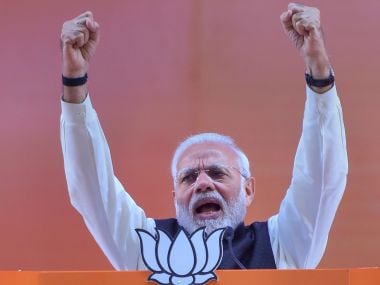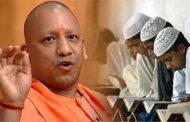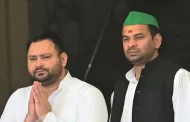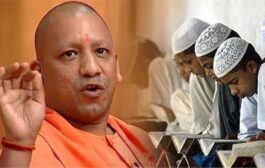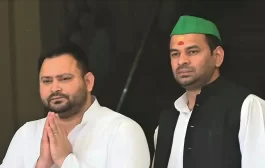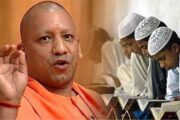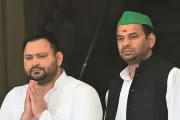Sikri was nominated for the coveted sinecure in November last year. This week, he voted alongside the prime minister to sack the CBI director.

Justice A.K. Sikri – in the news recently for casting his vote in the high-powered committee (HPC) which allowed Prime Minister Narendra Modi to sack Alok Verma as CBI director – has been nominated by the government to the London-based Commonwealth Secretariat Arbitral Tribunal (CSAT), sources in the Ministry of External Affairs told The Wire on Sunday.
Sikri was nominated by the government for the coveted sinecure – the tenure is four years but most CSAT members end up spending two terms – in November last year. At the time, the Supreme Court was seized of the Alok Verma case, in which the then director of the Central Bureau of Investigation had challenged the government’s attempt to oust him from his post despite enjoying a protected tenure.
Verma and other CBI officers who went to court at the same time had accused the government of interfering in the work of the premier investigative agency. The matter was heard by a bench headed by Chief Justice Ranjan Gogoi.
Justice Sikri retires from the Supreme Court on March 4, 2019.
According to Maneesh Chibber of The Print, who first broke the story on Sunday afternoon, the government secured the concurrence of both Justice Sikri and Chief Justice Gogoi before the nomination was filed.
Confirming the nomination, diplomatic sources told The Wire that the effort to send Sikri to London hit a temporary speed-bump when Sri Lanka decided to make a bid for the vacant CSAT post. Colombo later stood down and the nomination then sailed through.
However, confirmation from the Commonwealth Secretariat, to which the CSAT is attached, was received by South Block only “a few days ago”, the sources said.
At the time that the government decided to nominate Sikri, it knew that he was likely to be a member of any HPC to emerge from the Verma case.
If the Supreme Court had endorsed the government’s desire to send the CBI director on “leave”, then the matter would have ended there. But if the court were to rule against the government and declare as illegal Verma’s removal, then it was fairly clear that Chief Justice Gogoi would not be part of the HPC to settle the issue since he had led the bench which heard the case.
In such an event, it was almost certain that as the senior-most puisne judge, Justice Sikri would be asked to step in for the CJI and be the third member of the committee, along with Prime Minister Modi and Opposition leader Mallikarjun Kharge.
The CSAT tribunal is meant to deal with any dispute arising out of a contract that the Commonwealth Secretariat has signed. It essentially has jurisdiction to hear applications brought by three kinds of persons:
(a) a member of staff of the Commonwealth Secretariat
(b) the Commonwealth Secretariat
(c) any person who enters into a contract in writing with the Commonwealth Secretariat.
Judging by the CSAT website, the workload seems light. Only three cases from 2018 are listed under the ‘Judgments’ section. Members of the tribunal do not get a monthly salary, but receive sitting fees. They travel to London whenever a case comes up.
Government nomination of sitting judges
In 2012, the Manmohan Singh government drew some criticism from legal scholars for nominating a sitting Supreme Court judge, Dalveer Bhandari, to the International Court of Justice.
“The independence of the judiciary is a significant legal principle in India”, wrote Arghya Sengupta, currently director of the Vidhi Centre f0r Legal Policy:
“The judiciary must not only be independent of the co-ordinate wings of government as well as the parties before the case, but must also be seen to be so. The slightest doubt in the public mind of excessive proximity between the judiciary and the government, which is the largest litigant before it, may lead to significant apprehensions of a lack of impartiality thereby questioning the legitimacy of the entire adjudicatory setup. As the Supreme Court of India itself likes repeating in its judgments, “Judges, like Caesar’s wife, must be above suspicion.”
Unlike Bhandari, whose nomination, at least in formal terms came from India’s ‘national group’ at the Permanent Court of Arbitration, Sikri appears to have been handpicked for the London job by the government. In November 2017, India backed Bhandari for a second term, which he won after a difficult contest.
In 2014, Prime Minister Modi raised eyebrows when he made Justice P. Sathasivam, who had retired as Chief Justice of India earlier that year, governor of Kerala. Prior to that, no former CJI had ever been nominated for, or accepted, a governorship. As a judge of the Supreme Court, Justice Sathasivam had quashed the Tulsi Prajapati FIR and merged the case into Sohrabuddin case, thus providing major relief to to BJP leader Amit Shah.
Debate on ‘cooling off’ period
A petition seeking a mandatory cooling off period for judges before they can be eligible for government-backed jobs was shot down by Chief Justice H.L. Dattu in October 2014.
However, his predecessor as CJI, Justice R.M. Lodha, did observe on his last day in court that Supreme Court and high court judges should not accept constitutional positions after retirement.
source: TheWire

